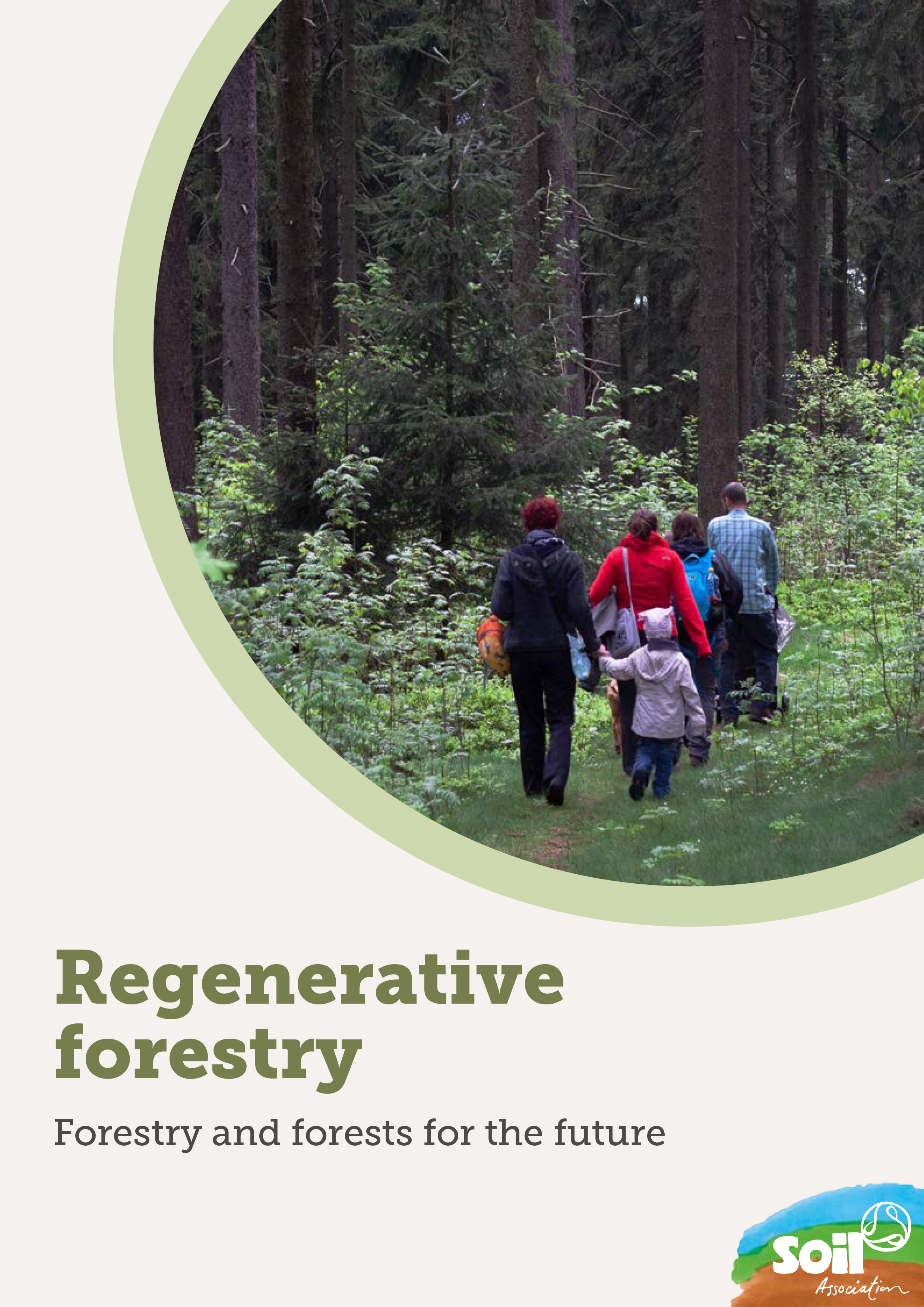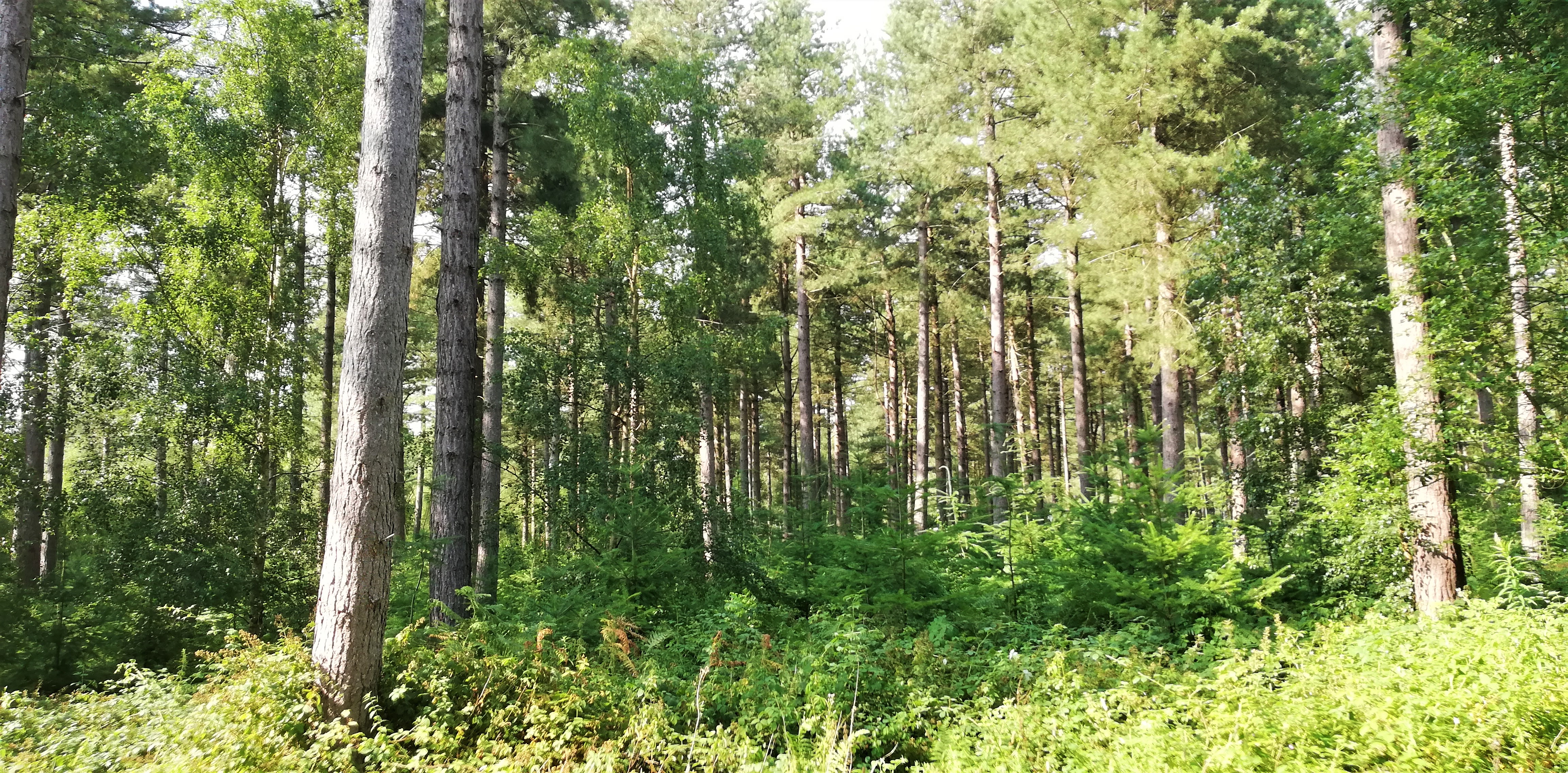Before I address these two big questions, it is perhaps important to address the question: Why the Soil Association? Many readers and practitioners will be aware of, and clients of, our forest certification services and some will be aware of our championing of agroforestry in recent years.

And maybe some of you recognise our organic brand in your shopping baskets. But as well as these associations, as we state in the Regenerative Forestry Report, trees and forests are at the heart of our work to transform the way we eat, farm and care for our natural world.
As both a charity and certification body, we work with farmers, foresters, companies and citizens to ensure forests around the world are protected. We have been active participants in the Forest Stewardship Council® (FSC®) even before 1993 and since the first version of the Principles and Criteria were developed, we’ve certified over 27 million hectares of sustainable forest in over 35 countries with the FSC® and we have more than 4000 chain of custody clients in over 65 countries.
All of which means, that we celebrate the achievements of forest certification, and the focus on sustainable forestry management since the early 1990’s. But the Soil Association believes that much more must be done to set out a broader vision for UK forestry as a land use, to build on and complement these acknowledged improvements at a forest scale in the UK.
The case for regenerative forestry
There are a number of paradoxes that afflict UK forestry currently. Firstly, almost everyone supports the mantra 'right tree, right place, right purpose', and politicians, citizens, nature conservation bodies, and many landowners all agree that more trees are needed - yet it seems increasingly challenging to deliver even modest planting targets. It looks very likely that we need to try something different alongside our current efforts. Perhaps a more integrated approach to tree planting and recognition that the UK is largely a farmed landscape, therefore needs to figure more highly in our strategies?

A second paradox is that as a sector we can rightly be proud of our embracing of multi-purpose forestry over the last 40 years. And yet biodiversity, including woodland biodiversity, continues to decline with woodland condition poor for almost all our planted forests, and not much better for our native woodlands. Many of our woodlands are in decline through lack of management. And for our managed forests, we still largely practise high-impact silviculture techniques in the form of clearfell and restock, including on many wet sites with fragile semi-organic soils, systematically removing the forest canopy and any emerging semblance of diversity on a regular cycle. And despite the near universal love of trees by UK citizens, the forest sector consistently struggles to make the wider case for forestry in civil society. There are many things we are getting right but maybe we now have to look to some of the orthodoxies around UK forestry for more of the answers?
The final paradox to highlight is that despite the rise of ecosystem service and natural capital thinking in recent years, the only real market signal to forest owners continues to come from a single ecosystem service, namely timber. In the report we celebrate the opportunities for timber as a climate friendly material and to support livelihoods. But imagine a paradigm whereby forest owners received an equally strong market signal for improving the woodland condition across the whole forest, as they currently do for timber production? How might this transform the options for forest managers to optimise management for nature AND climate AND people?
Our vision for regenerative forestry

I should emphasise that in the report we set out the Soil Association’s vision and also that this is our first contribution on what regenerative forestry might be, as part of a wider conversation. We are not the first to use the term regenerative forestry and we don’t claim to own the concept. Our thoughts operate at both a land use and sector level, but can also be applied to the management of any specific forest.
Regenerative forestry principles
- Regenerative forestry is a whole system approach, delivering benefits for climate, nature and people, both within the forest and from forest ecosystem services outside the forest. In practice, this means that benefits from the forest that occur outside the forest boundary, such as harvested wood products, climate and water regulation, and landscape amenity are all part of a regenerative forestry system.
- Regenerative forestry is an integrated approach to deliver the ambitions for more trees, by ensuring new forests are diverse and resilient, and integrated into our wider farmed landscape through mainstream adoption in farming systems. In practice, this means more farmers ‘taking control’ of the integration and subsequent management of trees across our farmed landscapes and how the forest sector supports farmers to make this work for their objectives.
- Regenerative forestry is resilient and adaptive and takes care of the forest itself, so that benefits for climate, nature and people can be provided for the long-term. In practice this means developing far more diversity in the system when we are intervening through silviculture, so that the forest can look after itself as an ecosystem.
- Regenerative forestry is a set of improved forest management practices that deliver optimal outcomes across the whole forest and avoids spatial intensification in some zones. The whole forest must deliver for climate, nature and people, whether actively managed or non-intervention, planted or regenerated. In practice this means moving beyond our general approach to multi-purpose forestry with recreation here, conservation over there and timber production away from these zones. This isn’t the same as saying that all parts of the forest have to be used by people or each hectare can support the same level of biodiversity. But it is saying that the management practices for all parts of the forest, need to take into account climate, nature and people. This means going well beyond the regulatory baseline for species diversity, especially in-stand, and recognising the impacts of clearfell and restock systems on fragile soils, citizen perceptions and forest condition. How can we hope to improve forest condition beyond the woeful current levels, when we routinely remove the forest canopy in most of our managed forests?
- Regenerative forestry supports high levels of engagement by people and delivers strong livelihoods. Regenerative forestry is rewarded for the market products and wider ecosystem services it delivers for climate, nature and people. In practice this means that we move beyond public engagement as a management planning requirement and that we take as seriously the public perceptions about ‘monoculture plantations’ and the ‘devastation’ of clearfelling (not words we use in the report but words we regularly hear), as we do the more general love of trees displayed by citizens. In addition, the reward system for the benefits to climate, nature and people from regenerative forestry and individual forests needs to move beyond the direct market benefits. Only through true reward for public benefits will forest owners and managers be incentivised to optimise throughout the forest, rather than zone and maximise different benefits spatially.
-
At a forest level we propose the following checks to evaluate whether a forest is being managed using regenerative practices.
- Is this stand or forest in a better condition than before?
- Is it locking up carbon in soils, trees and timber?
- Is it home to more nature?
- Is it supporting local people and livelihoods?
- Is it contributing to a diverse and ecologically functional landscape?
- Is it more resilient?
- Can it continue to do all this for the foreseeable future?
This checklist works as a comprehensive set of checks and not as a menu to select from as would be the case under a zoned approach to delivery of objectives.
Finally, in the report, we set out some thoughts on how we might transition to a regenerative forestry approach. The crucial role of forest owners, forest managers and forest industries is recognised in this transition but we also call on governments, policy makers, and civil society organisations to play their role.

We think that we are at a significant moment to broaden the case for forestry in the UK through this regenerative approach. And as the Chief Executive of the Soil Association, Helen Browning, concludes in the foreword to the report, we are optimistic about the future of forests and forestry, and a transition to a more regenerative model. 
There is government and citizen support for tree planting. Society is increasingly valuing the health and wellbeing benefits of woods and trees, and the benefits of timber as a sustainable material. This should lead to an increased UK forest resource, which, combined with the ingenuity of the professionals operating within the sector, means that a transition to more regenerative forestry is not only possible, but also hugely exciting.
The main report and evidence annex are available on the Soil Association website Regenerative Forestry Report (soilassociation.org). The Soil Association would like to acknowledge Robin Walter as a contributing author and researcher.
Clive has set out the Soil Association’s vision for regenerative forestry, and here at FSC UK we believe that it is very well aligned with FSC’s Principles and Criteria. Is this a vision you feel you could get behind? Can you suggest an alternative? Please do get in touch and let us know, especially if you’d like an opportunity to set out your aspirations for the UK’s forests.

